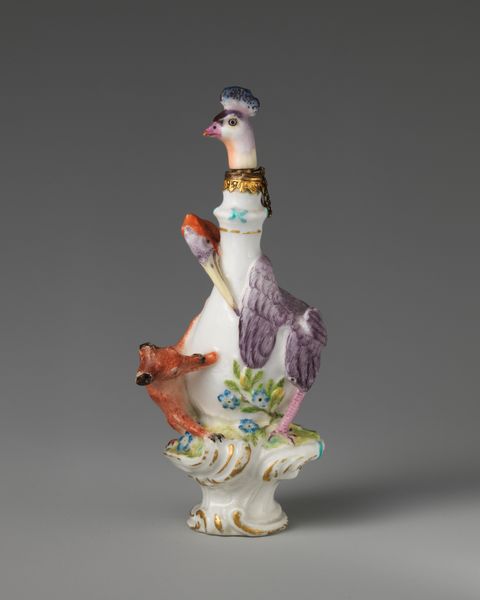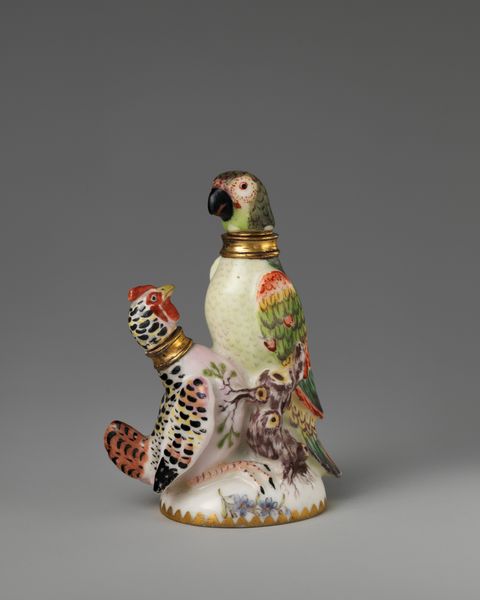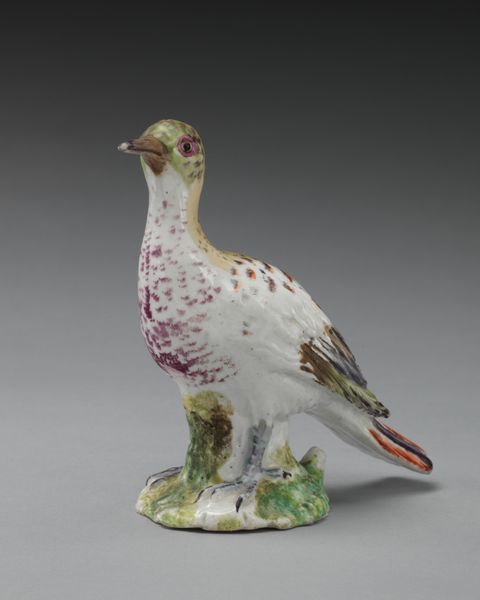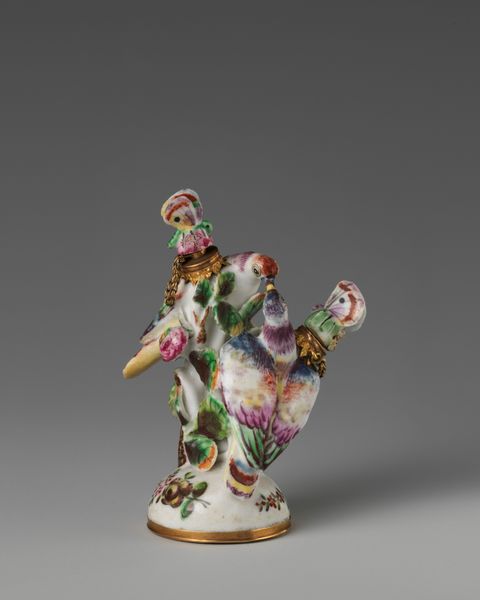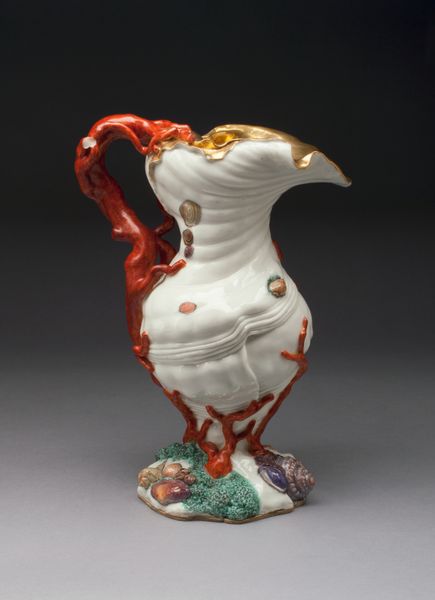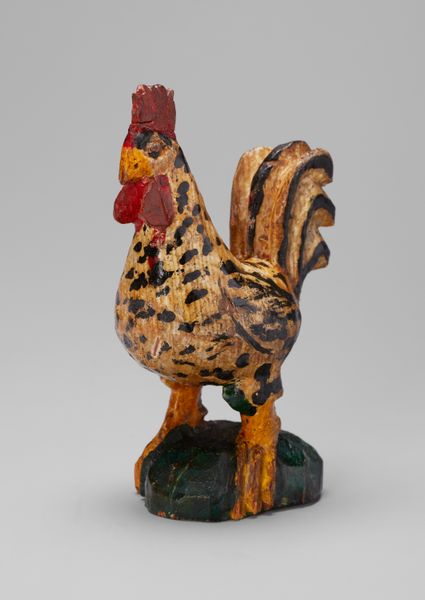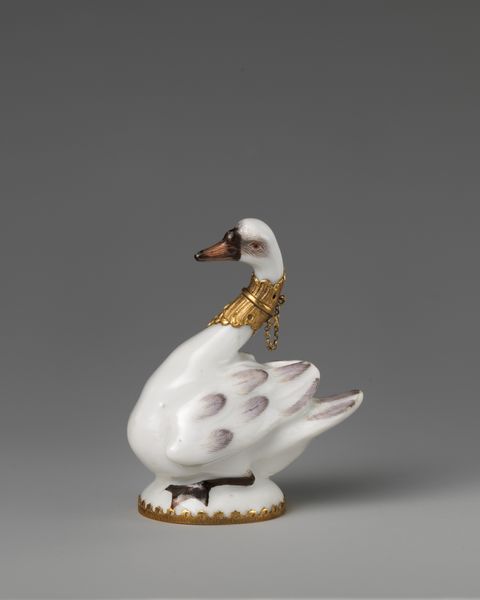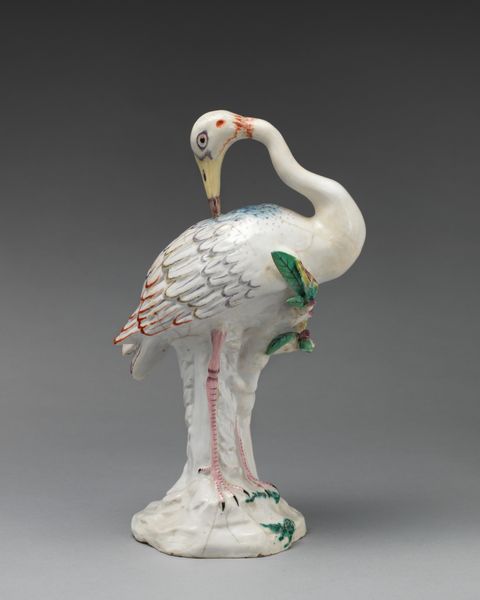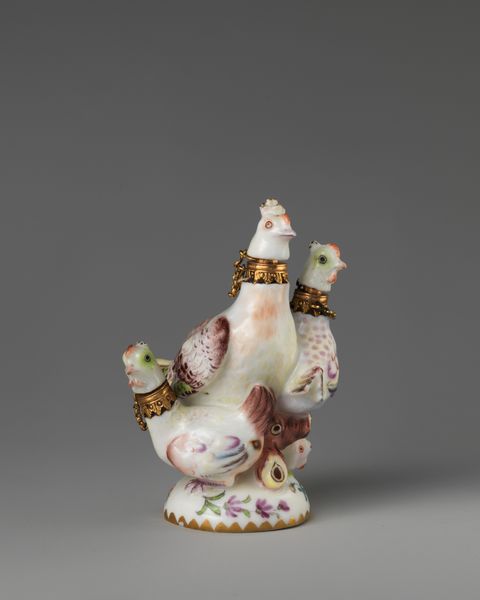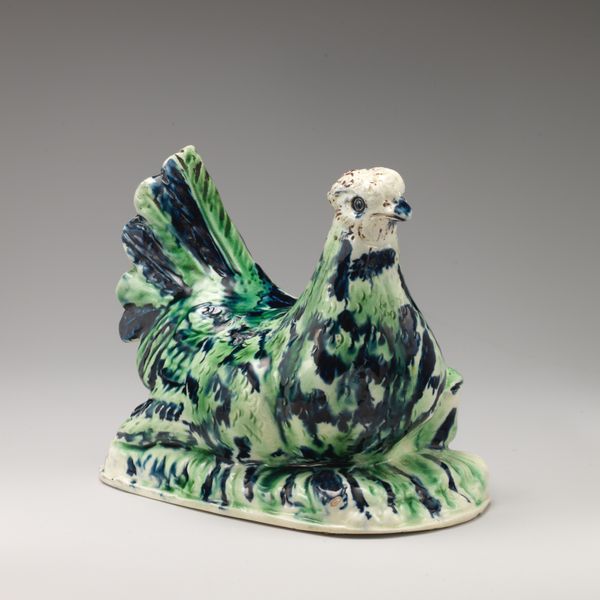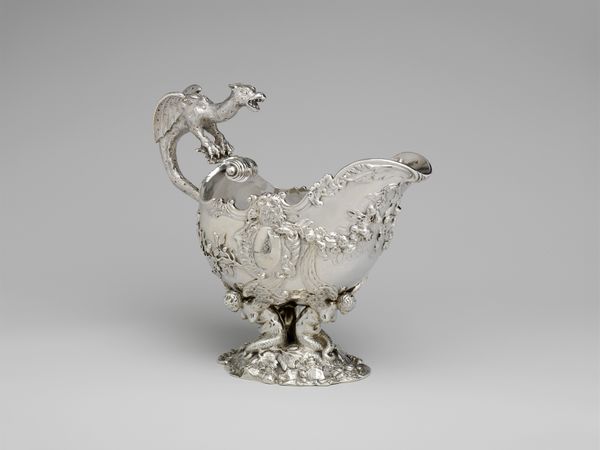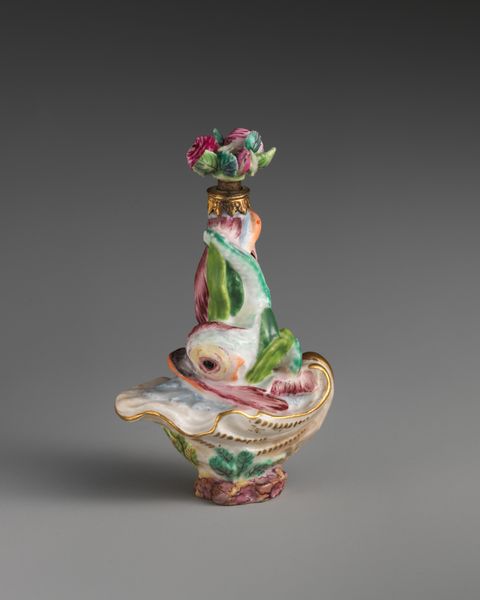
ceramic, porcelain, sculpture
#
ceramic
#
porcelain
#
figuration
#
sculpture
#
decorative-art
#
rococo
Dimensions: Overall: 3 1/2 × 2 in. (8.9 × 5.1 cm)
Copyright: Public Domain
Editor: So, here we have a porcelain sculpture from the Saint James's Factory, called "Rooster," dating back to 1750-1760. It's incredibly ornate, almost whimsical. I'm curious – how do we see this sculpture within the broader art landscape of its time? Curator: That's a brilliant question! The "Rooster," with its Rococo flourishes, existed in a period where porcelain production was heavily influenced by aristocratic patronage and consumption. The Saint James's Factory, much like Sèvres in France or Meissen in Germany, operated within a socio-political structure where luxury goods served as indicators of status and wealth. Editor: So it wasn't just art for art's sake? Curator: Rarely. Consider the rooster itself – a potent symbol in various cultures. Was it intended purely as a decorative object or perhaps as a sly commentary on national pride or even political machinations? Think about who was commissioning these pieces, who was consuming them, and the messages they sought to project. Editor: That's fascinating. It shifts the focus from pure aesthetics to a consideration of power dynamics. Were these factories directly funded by the crown or other political actors? Curator: Often indirectly, through wealthy nobles or merchants granted monopolies or privileges. The close proximity to power structures profoundly shaped what was produced and how it was marketed. Do you think the playful, decorative aspects served to legitimize the social order? Editor: It could be a way of sweetening the pill of inequality, perhaps? Subtly reinforcing hierarchy through beautiful, seemingly innocuous objects. I've never really thought of decorative arts in that way before. Curator: Exactly! Examining decorative arts through a historical lens forces us to confront uncomfortable questions about art's complicity in upholding specific social, political, and economic systems. Hopefully you found a new outlook on porcelain sculpture, which encourages further study into the realm of art as a shaper of social status.
Comments
No comments
Be the first to comment and join the conversation on the ultimate creative platform.
